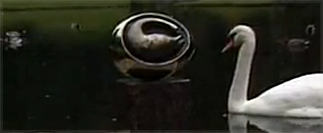Art of Lost Wax Casting

The Art of Lost Wax Casting. Shows an artist creating a bronze sculpture through the lost wax process, from concept through completion.
Lost-wax casting sometimes called by the French name of cire perdue (from the Latin cera perduta) is the process by which a metal (such as silver, gold, brass or bronze) sculpture is cast from an artist’s sculpture. Intricate works can be achieved by this method, primarily depending on the carver’s skills. In industrial uses, the modern process is called investment casting. An ancient practice, the process today varies from foundry to foundry, but the steps which are usually used in casting small bronze sculptures in a modern bronze foundry are generally quite standardized.
Other names for the process include “lost mould,” which recognizes that other materials besides wax can be used, including tallow, resin, tar, and textile; and “waste wax process” or “waste mould casting”, because the mould is destroyed to unveil the cast item. Other methods of casting include open casting, bivalve mould, and piece mould. Lost-wax casting was widespread in Europe until 18th century, when a piece-mold process came to predominate.
Read about the whole process> from Wikipedia




Leave a Reply
You must be logged in to post a comment.